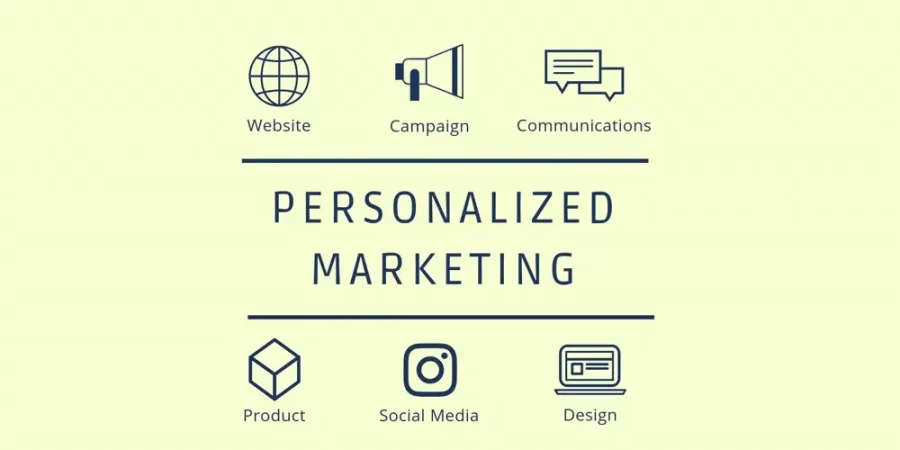Beginners Guide: How To Use Customer Data To Create Targeted And Personalized Marketing Campaigns?
Creating targeted and personalized marketing campaigns is crucial for any business looking to increase customer engagement and drive sales. By leveraging customer data, businesses can gain valuable insights into their customers’ preferences, behavior, and demographics, which can be used to create highly effective marketing campaigns. In this article, we will explore the different types of customer data that businesses can use to create targeted and personalized marketing campaigns, as well as the best practices for collecting and analyzing this data.
The first step in using customer data to create targeted and personalized marketing campaigns is to understand the different types of data that are available. There are two main types of customer data: demographic data and behavioral data. Demographic data includes information such as age, gender, income, education level, and occupation. Behavioral data, on the other hand, includes information about a customer’s behavior, such as their browsing history, purchase history, and engagement with marketing campaigns.
Once you have a clear understanding of the different types of customer data that are available, you can start to collect this data through various methods. One of the most common ways to collect customer data is through online forms, such as surveys and sign-up forms. These forms can be used to gather demographic and behavioral data, such as customer preferences, interests, and purchase history. Another way to collect customer data is through website analytics tools, such as Google Analytics. These tools can provide valuable insights into customer behavior, such as the pages they visit, how long they stay on your website, and which pages they leave from.
Once you have collected customer data, it’s important to analyze it in order to gain valuable insights into your customers’ preferences and behavior. One way to analyze customer data is through segmentation, which involves grouping customers based on similar characteristics, such as demographics or behavior. For example, you might segment your customers into different age groups or groups based on their purchase history. By segmenting your customers, you can create targeted marketing campaigns that appeal specifically to each group.
Another way to analyze customer data is through customer profiling, which involves creating detailed profiles of individual customers based on their demographics and behavior. Customer profiling can provide valuable insights into your customers’ needs and preferences, which can be used to create highly personalized marketing campaigns.
Once you have analyzed your customer data, you can use it to create targeted and personalized marketing campaigns. For example, if you have segmented your customers into different age groups, you can create targeted campaigns that appeal specifically to each group. For example, if you have a segment of customers who are primarily in the 18-24 age range, you may want to create a campaign that focuses on trendy, cutting-edge products that appeal to this age group. On the other hand, if you have a segment of customers who are primarily in the 55+ age range, you may want to create a campaign that focuses on more traditional, classic products that appeal to this age group.
Another way to use customer data to create targeted and personalized marketing campaigns is through retargeting. Retargeting is a form of online advertising that allows you to show ads to customers who have previously visited your website. By using customer data to retarget customers who have shown an interest in your products or services, you can create highly effective marketing campaigns that are tailored specifically to their needs and preferences.
It’s important to track and measure the success of your marketing campaigns in order to determine whether they are achieving the desired results. Tools such as Google Analytics can be used to track the performance of your marketing campaigns, including how many people are clicking on your ads, how many are converting into customers, and how much revenue is being generated. By tracking and measuring the success of your marketing campaigns, you can make data-driven decisions about how to improve.
Another way to use customer data to create targeted and personalized marketing campaigns is through email marketing. Email marketing allows businesses to send personalized emails to their customers based on their demographics and behavior. For example, if you have a customer who has recently made a purchase, you can send them an email offering them a discount on their next purchase. Similarly, if you have a customer who has shown an interest in a particular product or service, you can send them an email promoting that product or service.
One of the best ways to create personalized marketing campaigns is through the use of artificial intelligence (AI) and machine learning (ML) technologies. These technologies can be used to analyze customer data in real-time and make predictions about customer behavior, such as which products or services they are most likely to purchase. This information can be used to create personalized marketing campaigns that are tailored to each customer’s individual needs and preferences.
Using customer data to create targeted and personalized marketing campaigns is essential for any business looking to increase customer engagement and drive sales. By understanding the different types of customer data that are available, collecting and analyzing this data, and using it to create targeted and personalized marketing campaigns, businesses can gain valuable insights into their customers’ preferences and behavior, which can help them create highly effective marketing campaigns.
In addition, it is important to note that the use of customer data should always be done in compliance with relevant laws and regulations, such as the General Data Protection Regulation (GDPR) and the California Consumer Privacy Act (CCPA). Businesses should also be transparent about their data collection practices and obtain consent from customers before collecting and using their data.
Here are some bullet points to help you learn How to use customer data to create targeted and personalized marketing campaigns for success:
- Understanding the different types of customer data: There are two main types of customer data, demographic data and behavioral data. Demographic data includes information such as age, gender, income, education level, and occupation. Behavioral data, on the other hand, includes information about a customer’s behavior, such as their browsing history, purchase history, and engagement with marketing campaigns.
- Collecting customer data: One of the most common ways to collect customer data is through online forms, such as surveys and sign-up forms. These forms can be used to gather demographic and behavioral data, such as customer preferences, interests, and purchase history. Another way to collect customer data is through website analytics tools, such as Google Analytics.
- Analyzing customer data: Once you have collected customer data, it’s important to analyze it in order to gain valuable insights into your customers’ preferences and behavior. One way to analyze customer data is through segmentation, which involves grouping customers based on similar characteristics, such as demographics or behavior. Another way to analyze customer data is through customer profiling, which involves creating detailed profiles of individual customers based on their demographics and behavior.
- Creating targeted and personalized marketing campaigns: By using the customer data, segmentation and profiling insights, businesses can create targeted marketing campaigns that appeal specifically to each group. For example, if you have a segment of customers who are primarily in the 18-24 age range, you may want to create a campaign that focuses on trendy, cutting-edge products that appeal to this age group.
- Retargeting: Another way to use customer data to create targeted and personalized marketing campaigns is through retargeting. Retargeting is a form of online advertising that allows you to show ads to customers who have previously visited your website. By using customer data to retarget customers who have shown an interest in your products or services, you can create highly effective marketing campaigns that are tailored specifically to their needs and preferences.
- Email marketing: Email marketing allows businesses to send personalized emails to their customers based on their demographics and behavior. For example, if you have a customer who has recently made a purchase, you can send them an email offering them a discount on their next purchase.
- Artificial Intelligence and Machine Learning: One of the best ways to create personalized marketing campaigns is through the use of AI and ML technologies. These technologies can be used to analyze customer data in real-time and make predictions about customer behavior, such as which products or services they are most likely to purchase.
- Compliance with data protection laws: The use of customer data should always be done in compliance with relevant laws and regulations, such as the General Data Protection Regulation (GDPR) and the California Consumer Privacy Act (CCPA). Businesses should also be transparent about their data collection practices and obtain consent from customers before collecting and using their data.
In conclusion, using customer data to create targeted and personalized marketing campaigns is essential for any business looking to increase customer engagement and drive sales. By understanding the different types of customer data that are available, collecting and analyzing this data, and using it to create targeted and personalized marketing campaigns, businesses can gain valuable insights into their customers’ preferences and behavior.
By leveraging these insights, businesses can create highly effective marketing campaigns that resonate with their customers and drive conversions. Moreover, it is important to always use customer data in compliance with laws and regulations and obtain consent before collecting and using their data. With the right approach, customer data can be a powerful tool for businesses looking to take their marketing efforts to the next level.





Leave a Reply